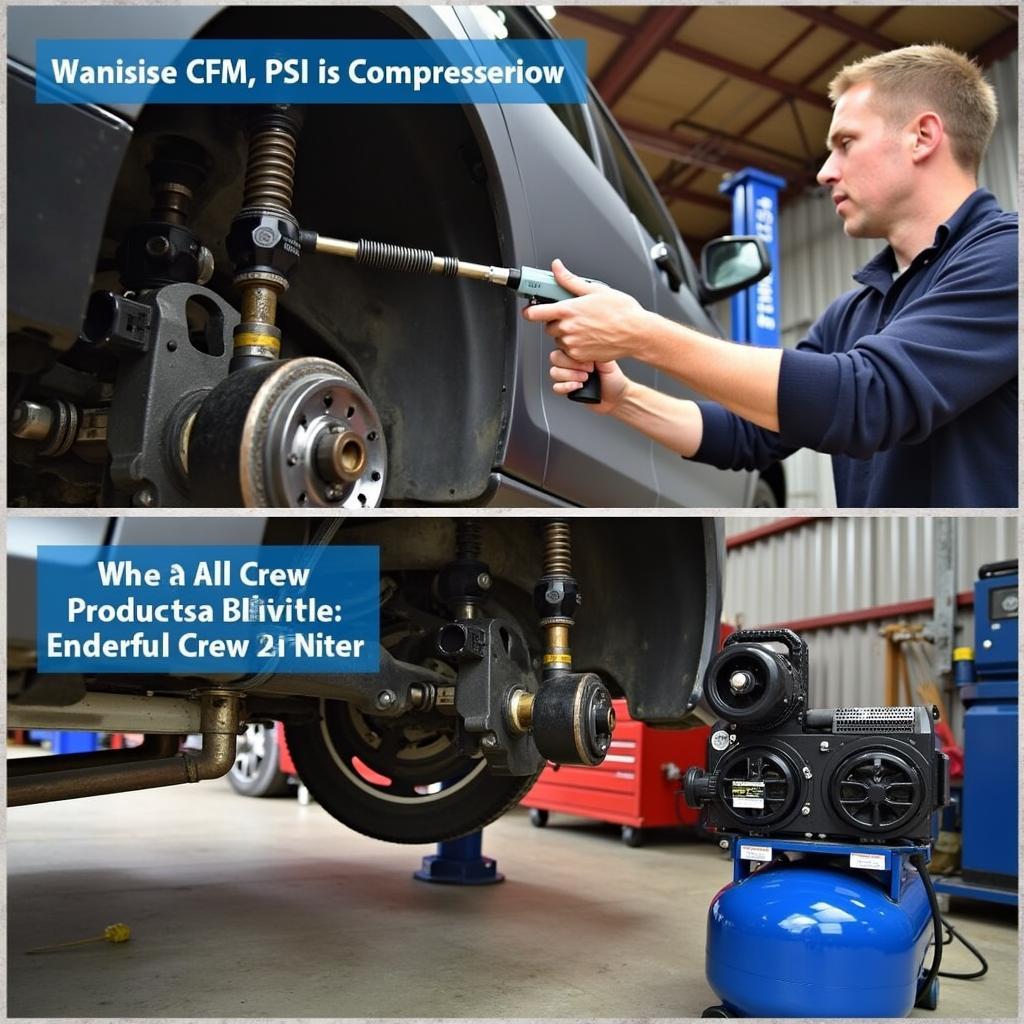Compressed air is essential for a wide range of car service station operations, from tire inflation and impact wrench operation to paint spraying and diagnostic testing. Understanding the compressed air requirement for your car service station is crucial for efficient workflow, tool performance, and overall productivity. Choosing the right compressor size and setup can significantly impact your business’ bottom line.
Choosing the Right Compressor for Your Car Service Station
Selecting the appropriate air compressor is a critical decision for any car service station. Several factors influence this choice, including the types of tools used, the frequency of use, and the desired air pressure and flow rate. Choosing a compressor that’s too small can lead to inadequate air supply, hindering operations and potentially damaging tools. Conversely, an oversized compressor can be wasteful in terms of energy consumption and initial investment.
Factors to Consider When Choosing a Compressor
- Air Tool Requirements: Different tools have varying air consumption rates, measured in cubic feet per minute (CFM). Identify the CFM requirements of your most demanding tools and ensure the compressor can meet or exceed them.
- Duty Cycle: The duty cycle refers to the percentage of time a compressor can run continuously. For frequent use, choose a compressor with a higher duty cycle.
- Tank Size: A larger tank can store more compressed air, allowing for longer operation times before the compressor needs to cycle on again. Consider the frequency and duration of your air tool usage when selecting tank size.
- Pressure Requirements: Ensure the compressor can deliver the required pressure for your tools, typically measured in pounds per square inch (PSI).
- Power Source: Choose between electric and gas-powered compressors based on your station’s power availability and environmental considerations. Electric compressors are generally quieter and more suitable for indoor use.
- Portability: If portability is essential, consider a smaller, wheeled compressor.
Understanding CFM and PSI
CFM and PSI are two crucial specifications to consider when choosing an air compressor. CFM represents the volume of air delivered, while PSI indicates the air pressure. Understanding these values will help you select a compressor that effectively powers your tools.
CFM Requirements for Common Car Service Tools
- Impact Wrenches: Typically require 4-6 CFM at 90 PSI.
- Tire Inflators: Require varying CFM depending on tire size and desired inflation speed.
- Paint Spray Guns: Require higher CFM, often between 8-12 CFM at 40-60 PSI.
- Air Ratchets: Require 3-4 CFM at 90 PSI.
 Mechanic Using an Air Compressor to Power an Impact Wrench at a Car Service Station
Mechanic Using an Air Compressor to Power an Impact Wrench at a Car Service Station
Maintaining Your Air Compressor
Regular maintenance is essential to ensure the longevity and efficiency of your air compressor.
Essential Maintenance Tasks
- Draining the Tank: Regularly drain the moisture from the tank to prevent corrosion and ensure optimal performance.
- Checking Air Filters: Clean or replace air filters as needed to prevent dust and debris from entering the compressor.
- Lubricating Moving Parts: Lubricate moving parts according to the manufacturer’s recommendations.
- Inspecting Hoses and Fittings: Check for leaks and replace damaged hoses or fittings promptly.
“Regular maintenance is key to maximizing the lifespan and performance of your air compressor,” says John Miller, a certified automotive technician with over 20 years of experience. “A well-maintained compressor ensures consistent air supply and reduces the risk of costly repairs.”
Conclusion
Choosing the right compressed air setup for your car service station is crucial for efficient operations and optimal tool performance. By understanding your CFM and PSI requirements and implementing a regular maintenance schedule, you can ensure a reliable and cost-effective compressed air solution for your business. Investing in a quality air compressor and maintaining it properly will pay dividends in the long run, contributing to a smooth and productive workflow.
FAQ
- What is the difference between CFM and PSI?
- How do I determine the CFM requirements for my tools?
- What size air compressor do I need for my car service station?
- How often should I drain the moisture from my air compressor tank?
- What are the signs of a failing air compressor?
- What type of air compressor is best for a mobile car service?
- How can I improve the efficiency of my air compressor system?
Need more support? Contact us via WhatsApp: +1(641)206-8880, or Email: [email protected]. Our 24/7 customer service team is ready to assist you.